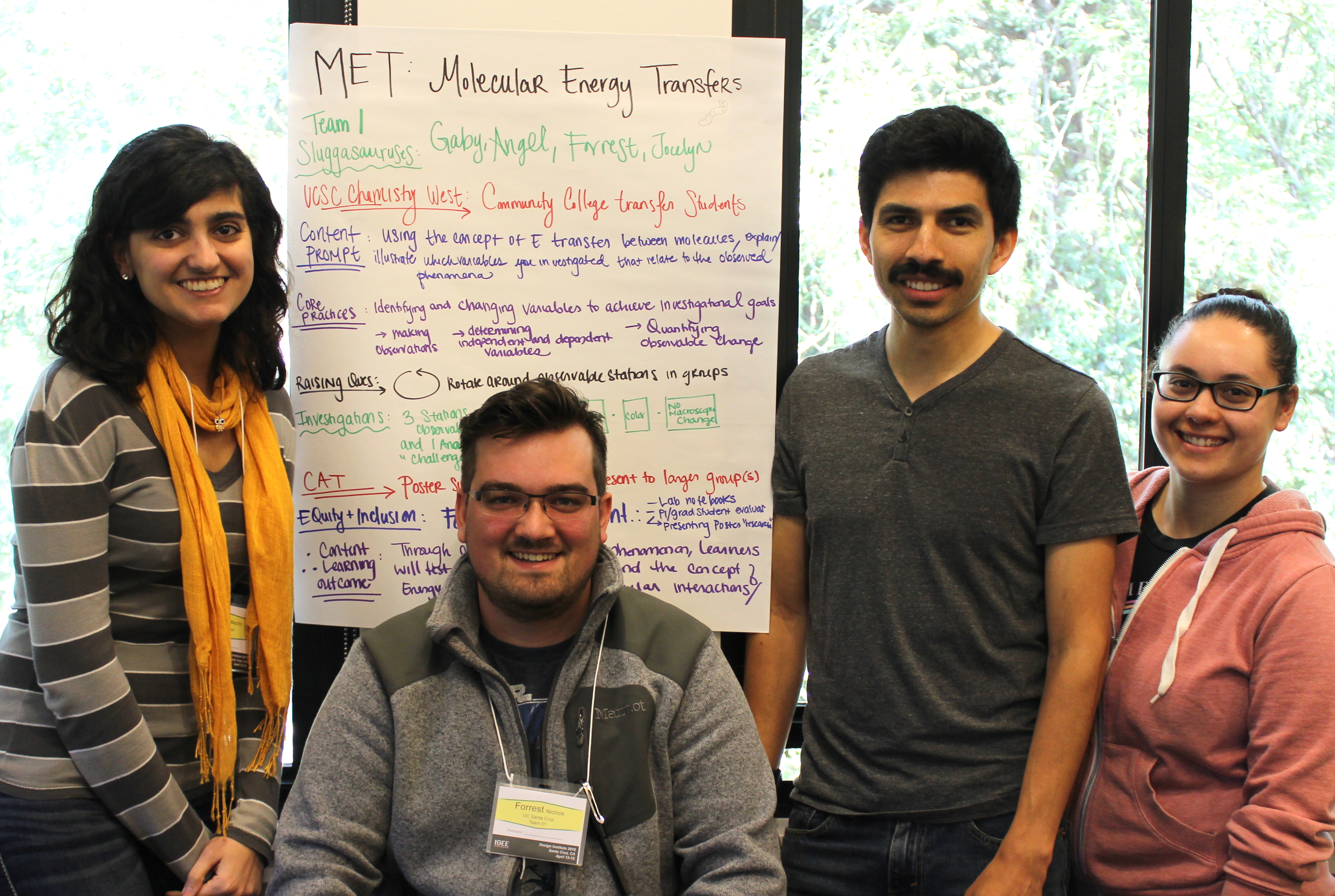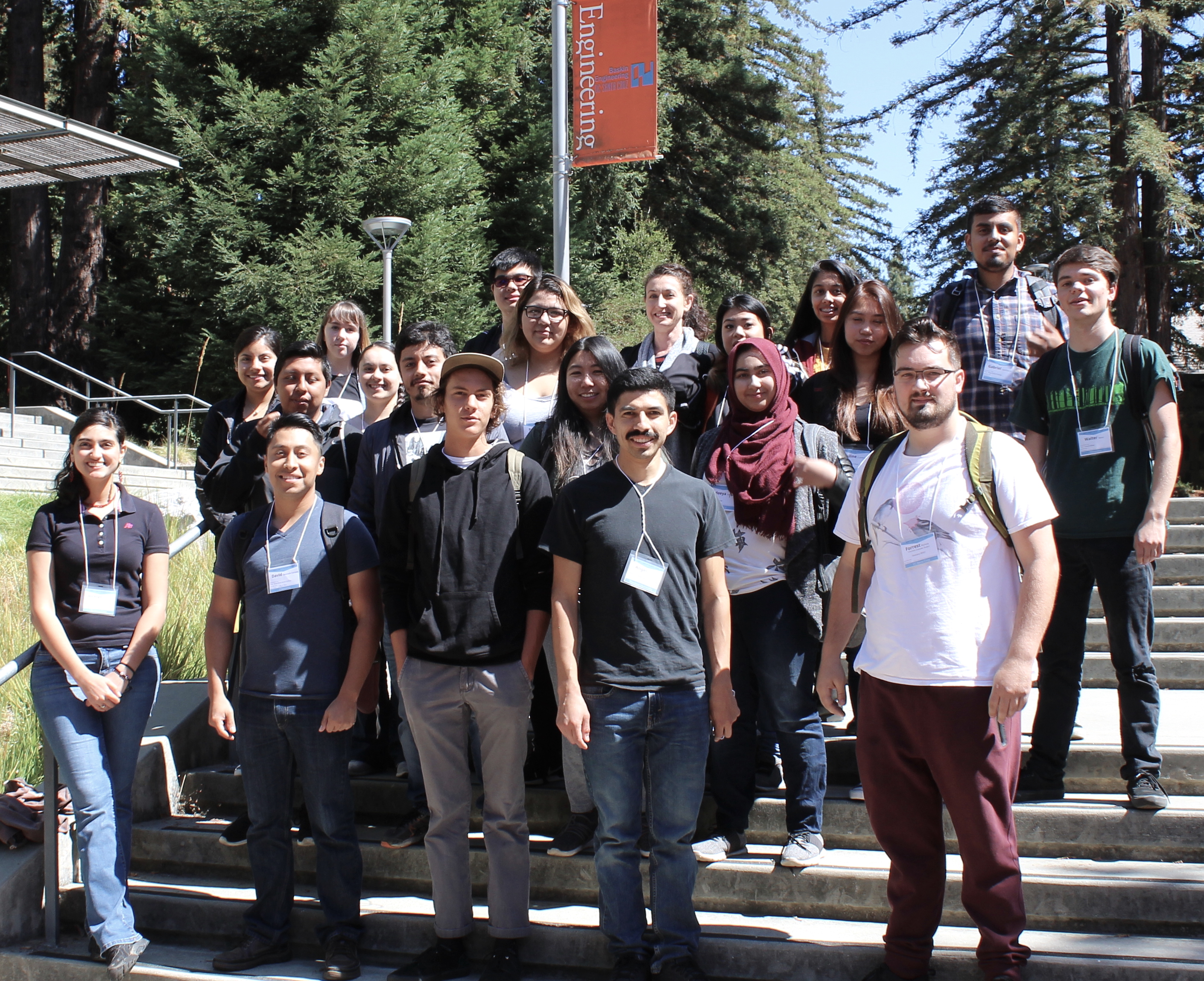Chemistry WEST: this team of scientist/engineer educators designed and taught an inquiry lab activity through ISEE’s Professional Development Program
 L-R: Jocelyn Macho, Forrest Nichols, Angel Resendez, Gabriella Amberchan
L-R: Jocelyn Macho, Forrest Nichols, Angel Resendez, Gabriella Amberchan
Venue: Chemistry WEST
Team Members:
Design Team Lead: Angel Resendez, Postdoc, Radiation Oncology, Stanford University
Forrest Nichols, Graduate Student, Chemistry, UC Santa Cruz
Gabriella Amberchan, Graduate Student, Chemistry & Biochemistry, UC Santa Cruz
Jocelyn Macho, Graduate Student, Chemistry & Biochemistry, UC Santa Cruz
Audience: 17 UCSC Transfer students (undergraduates)
Funding for this team was provided by: UC Santa Cruz, ISEE
Activity Name: Chemistry WEST
Learning Goals Author: Forrest Nichols
The main content prompt in this inquiry activity was energy transfer between molecules through observable changes and control of variables. This concept pertains to all fields of science and therefore remains relevant to all learners regardless of focus area. Although this concept is wide spread throughout all modern teachings of chemistry, energy transfer remains a difficult idea to grasp. This could be due in part to a combination of circumstances including a disconnect between macroscopic observable changes and microscopic molecular interactions, lack of concrete definitions for energy and how different forms of energy are connected, and minimal opportunities for hands on observation of such phenomenon.
Whichever the case, our team designed an activity to spark the learner’s interest with intriguing macroscopic observable changes while providing enough information for the learner to reach an understanding of energy transfer between molecular interactions through hands on experimentation. The activity required the learners to identify an interesting phenomenon, design experiments to further study the phenomenon of interest, and finally propose a schematic at the molecular scale to account for the macroscopic phenomenon.
Our team designed two rubrics specific to the two demonstrations, color change and fluorescence. The color change rubric was composed of three dimensions: 1) Propose a molecular mechanism, 2) Identify which mechanism produces an observable change and which produces no change, and 3) Identify an anomaly case. These dimensions allowed for flexibility in learner backgrounds such that specific concepts and nomenclature was not necessary to reach proficiency.
After the activity, learners were given a content prompt stating: Using the concept of energy transfer between molecules, explain/illustrate which variables you investigated that relate to the observed phenomenon. The learners could use notes taken in their provided laboratory notebooks during the investigation and used this during the final jigsaw discussion session. A score of 0.5 suggested proficiency while a score of 1 was the highest possible. All students obtained a minimum score of 0.5 and 3/5 students receives 1/1. These results suggest the design of this activity provided enough detail and background to support all learners gain a better understanding of molecular energy transfer. After discussion with teammates, we realized that there should have been more emphasis on the identification of the anomaly case to assist all student in receiving 1/1. One solution to this could have been including the anomaly case during the original demonstration portion.

